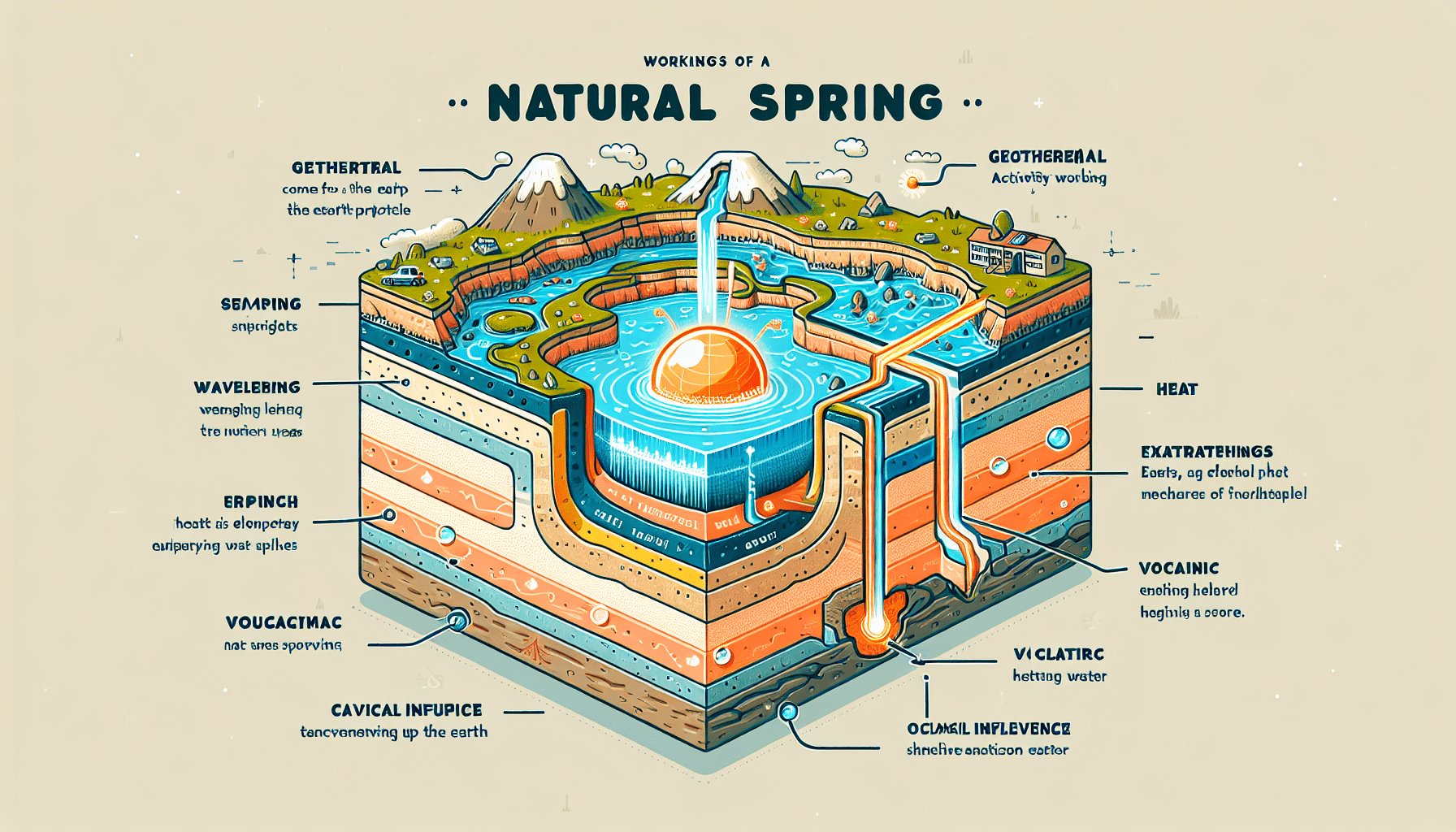Imagine relaxing in a steamy pool of water amidst beautiful natural surroundings. You may have wondered how hot springs get their name. Are hot springs naturally hot, or is their temperature artificially regulated? In this article, we delve into the fascinating world of hot springs to uncover the truth behind their warmth. So, let̵7;s embark on a journey to understand the natural wonders that warm our bodies and soothe our souls. Yes, they are! Hot springs are natural geothermal features that contain warm or hot water, heated by geothermal heat from deep within the Earth. They are found in various parts of the world and have been enjoyed for centuries for their therapeutic and recreational benefits.
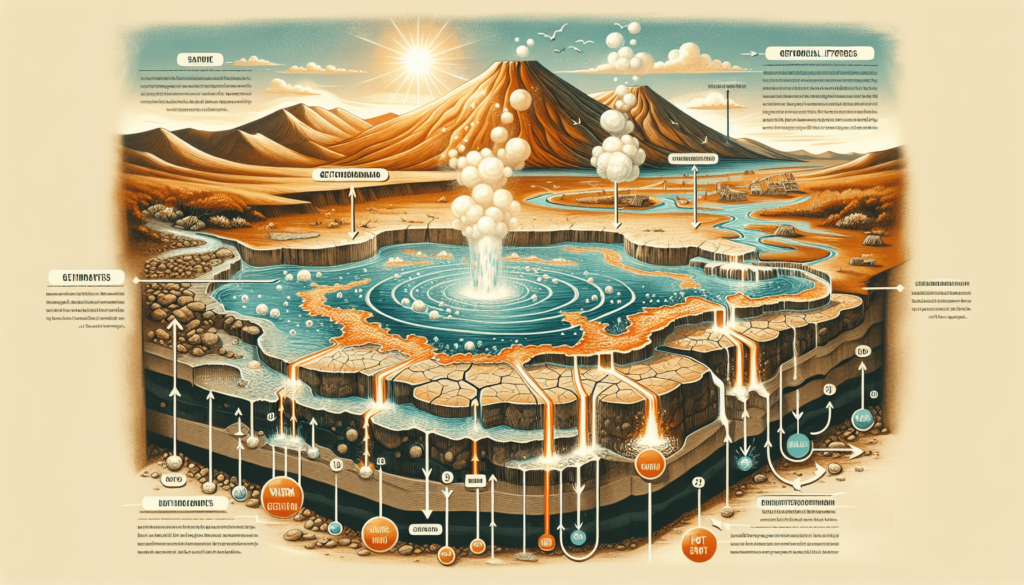
Definition of hot springs
Hot springs are geological formations where water is heated underground by geothermal heat and then rises to the surface. The water in hot springs is typically warmer than the surrounding air temperature, and the temperature can vary depending on a range of factors, including the depth of the source and the geological structure. Hot springs are characterized by their warm or hot water, which can be utilized for various purposes such as bathing, therapy, or energy production.
Temperature requirements
To be classified as a hot spring, the water must have a temperature higher than the average annual air temperature of the region. Generally, the minimum temperature requirement for a hot spring is around 98°F (37°C). However, hot springs can reach much higher temperatures, with some exceeding 180°F (82°C). The temperature of hot springs is influenced by a combination of geological factors, including the heat source, the rate of water circulation, and the depth of the source.
Effects of geothermal heat
The geothermal heat responsible for heating hot springs is generated by the Earth’s core through the decay of radioactive elements. This heat is transferred through the Earth’s layers, heating up rocks and water reservoirs deep underground. When water comes into contact with these heated rocks, it absorbs the thermal energy and rises to the surface as a hot spring. The transfer of heat from the Earth’s core to the hot springs has various effects, including the warming of the water, the alteration of the chemical composition of the water, and the creation of unique ecosystems.
Common temperature range
Hot springs can have a wide range of temperatures, but they are generally classified into three main categories based on temperature. These categories include:
-
Low-temperature hot springs: These hot springs typically have temperatures ranging from 98°F (37°C) to 104°F (40°C). They are often used for relaxation and have a mild therapeutic effect.
-
Medium-temperature hot springs: These hot springs have temperatures ranging from 104°F (40°C) to 122°F (50°C). They are commonly utilized for therapeutic purposes, such as hydrotherapy, and can provide relief for various ailments.
-
High-temperature hot springs: These hot springs have temperatures exceeding 122°F (50°C). They are often too hot for direct bathing and are primarily used for geothermal energy production.
The temperature range of hot springs can vary depending on the geographical location and the specific geological conditions of the area.
Natural sources of hot springs
Hot springs have natural origins and are influenced by various geothermal and geological processes. Some of the primary natural sources of hot springs include geothermal activity, volcanic activity, and friction-generated heat.
Geothermal activity
Geothermal activity refers to the heat generated by the Earth’s core and mantle. The Earth’s core produces a tremendous amount of heat through the process of radioactive decay, and this heat gradually escapes towards the surface. The heat from the core warms up rocks and water reservoirs deep within the Earth, creating pockets of hot water that eventually rise to the surface as hot springs.
Volcanic activity
Volcanic activity can also contribute to the formation of hot springs. Magma, which is molten rock beneath the Earth’s surface, generates intense heat. When magma comes into contact with groundwater or surface water, it can cause the water to heat up rapidly, forming hot springs. Volcanic hot springs are often found in volcanic regions where there is active volcanic activity or where there are dormant or extinct volcanoes.
Friction-generated heat
Friction-generated heat is another natural source of hot springs. This phenomenon occurs along fault lines and tectonic plate boundaries, where rocks are subjected to intense pressure and movement. As the rocks slide against each other, friction is generated, resulting in the production of heat. This heat can warm up adjacent water reservoirs, leading to the formation of hot springs along fault lines.
Geothermal activity
Geothermal activity is a key factor in the formation of hot springs. It involves the transfer of heat from the Earth’s core to the hot springs through various underground processes.
Underground heat sources
The Earth’s core produces an enormous amount of heat through the decay of radioactive elements. This heat is transferred towards the surface through the mantle and crust, gradually warming rocks and water reservoirs deep underground. As the heat spreads, it raises the temperature of the surrounding rocks and the water, creating the conditions for hot springs to form.
Heat transfer process
The transfer of heat from the Earth’s core to the hot springs primarily occurs through conduction, convection, and radiation. In conduction, heat is transferred directly through physical contact between particles. Convection involves the movement of heated fluids, such as water, which carries the thermal energy upwards. Radiation refers to the transfer of heat through electromagnetic waves.
Hot springs as a result
As the heat from the Earth’s core reaches the rocks and water deep within the Earth, the water absorbs the thermal energy and begins to rise towards the surface. Along the way, the water may pick up minerals and nutrients from the rocks, leading to the unique chemical composition often found in hot springs. Eventually, the water emerges at the surface as a hot spring, providing a natural oasis of warmth and relaxation.
Volcanic activity
Volcanic activity plays a significant role in the formation of hot springs, especially in regions with active or dormant volcanoes. The interaction between magma and water is a key process in volcanic hot spring formation.
Magma and heat
Magma, which is molten rock beneath the Earth’s surface, contains a tremendous amount of heat. When magma encounters groundwater or surface water, the intense heat rapidly warms up the surrounding water, resulting in the formation of hot springs. The proximity to volcanic activity ensures a constant supply of heat to the hot springs, making them particularly warm and inviting.
Water interaction
When magma and water interact, several processes contribute to the formation of hot springs. The heat from the magma heats up the water surrounding it, causing it to expand and escape to the surface. This process can also involve the dissolution of minerals and gases from the rocks, creating unique chemical compositions in the hot springs. The combination of heat and dissolved minerals contributes to the therapeutic properties often associated with volcanic hot springs.
Hot springs formation
As the heated water rises towards the surface, it creates fractures and channels within the rocks, forming pathways for the water to flow. Over time, these channels become well-established, leading to the emergence of hot springs. The constant supply of heat from the volcanic activity ensures that the hot springs remain warm and active, making them popular destinations for thermal spa treatments and relaxation.
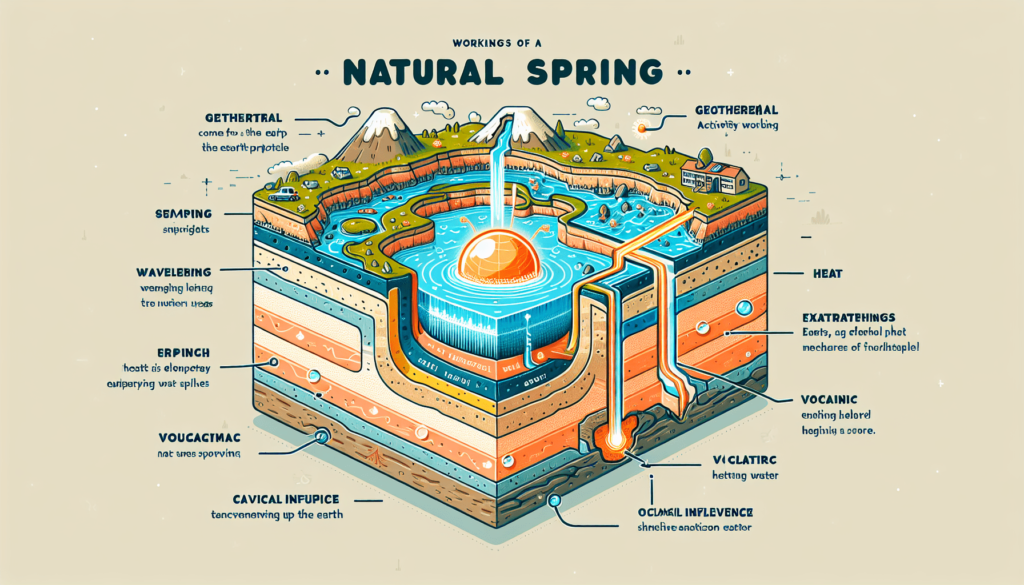
Friction-generated heat
Friction-generated heat plays a crucial role in the formation of hot springs along fault lines and tectonic plate boundaries. The interaction between rocks and tectonic movement generates heat, leading to the creation of these unique hot springs.
Faults and tectonic movements
The Earth’s crust is comprised of multiple tectonic plates that are constantly moving and interacting with one another. Along the boundaries of these plates, intense pressures and forces are exerted on the rocks, resulting in faults and fractures. The movement along these faults generates friction, leading to the production of heat.
Rock friction and heat
As the rocks slide against each other along the faults, the friction generated causes them to heat up. This heat can warm up adjacent water reservoirs, resulting in the formation of hot springs. The temperature of the hot springs formed through friction-generated heat can vary depending on the intensity of the movements and the depth of the water source.
Hot springs along fault lines
Hot springs formed along fault lines are often characterized by their consistent temperature and flow. The constant movement and friction along the faults ensure a steady supply of heat to the hot springs, making them reliable sources of warmth and therapeutic benefits. These hot springs are often found in areas with significant tectonic activity, offering visitors a unique opportunity to experience the geological processes at work.
Factors influencing hot spring temperatures
Several factors influence the temperature of hot springs, resulting in variations in temperature among different hot springs worldwide. The depth of the source, the geological structure, and the rate of water circulation are among the primary factors that determine the temperature of hot springs.
Depth of the source
The depth of the water source plays a significant role in determining the temperature of a hot spring. Deeper water sources are exposed to higher levels of geothermal heat, resulting in higher temperatures. The temperature of hot springs tends to increase with greater depth, although other factors can also influence the overall temperature range.
Geological structure
The geological structure of an area, including the presence of rocks and their thermal conductivity, can affect the temperature of hot springs. Rocks with high thermal conductivity, such as granite, are efficient at transferring heat, resulting in higher hot spring temperatures. In contrast, rocks with low thermal conductivity, such as sedimentary rocks, may retain less heat and lead to lower hot spring temperatures.
Rate of water circulation
The rate of water circulation within a hot spring system also affects its temperature. A higher rate of water circulation allows for more efficient heat transfer from the heat source to the surface, leading to higher temperatures. Conversely, a slower rate of water circulation may result in less efficient heat transfer and lower hot spring temperatures.
It is important to note that these factors are not mutually exclusive, and variations in temperature among hot springs can be attributed to a combination of these factors.
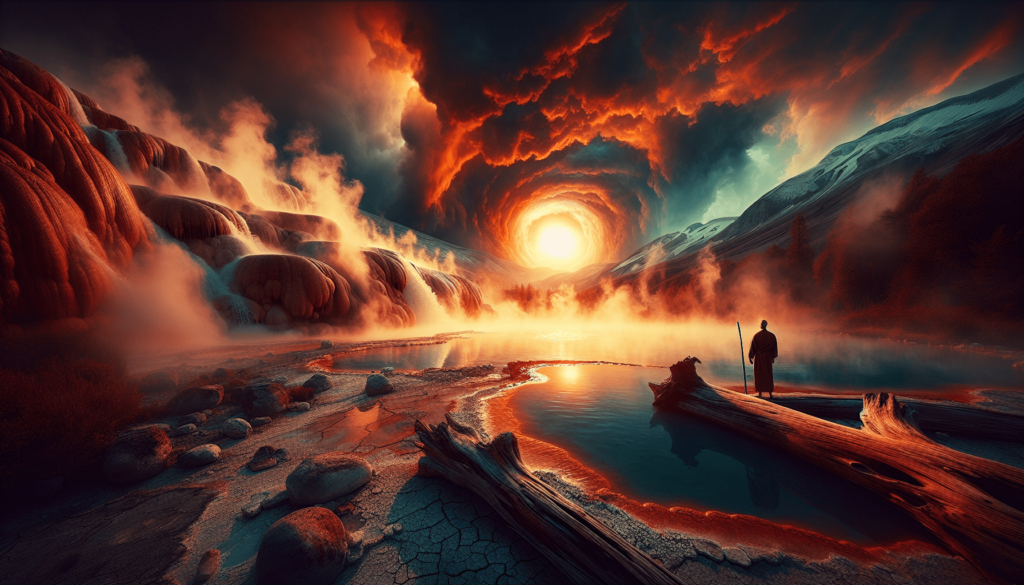
Hot spring temperature measurement
Measuring the temperature of hot springs is essential for research, monitoring, and managing these natural resources. Various methods and instruments are used to measure and monitor hot spring temperatures.
Thermometers and sensors
The most common method of measuring hot spring temperatures is through the use of thermometers and temperature sensors. Thermal-resistant thermometers, such as mercury or digital thermometers, can be used to directly measure the temperature of the hot spring water. Temperature sensors, including thermocouples and resistance temperature detectors, can also be installed in hot spring systems to continuously monitor temperature changes over time.
Monitoring and data collection
Regular monitoring and data collection are vital for understanding the behavior and changes in hot spring temperatures. Hot springs can be monitored through a network of temperature sensors placed strategically at different locations within the hot spring system. Data loggers connected to these sensors can collect temperature data at regular intervals, providing valuable insights into temperature variations throughout the day, seasonally, and over longer periods.
Variations in temperature
Hot spring temperatures can vary both spatially and temporally. Spatial variations refer to temperature differences within a single hot spring system, while temporal variations refer to temperature changes over time. Spatial variations can be influenced by factors such as the proximity to the heat source and the rate of water circulation. Temporal variations can occur due to seasonal changes, changes in the heat source, or changes in the geological structure. Monitoring and analyzing these variations can help researchers and geologists better understand the dynamics of hot springs and their associated geological processes.
Types of hot springs
Hot springs come in various types, often categorized based on their chemical composition and the presence or absence of certain minerals. Some of the common types of hot springs include alkaline hot springs, acidic hot springs, neutral hot springs, and saltwater hot springs.
Alkaline hot springs
Alkaline hot springs are characterized by high pH levels, meaning they have a higher concentration of hydroxide ions. These hot springs often contain dissolved minerals such as calcium, magnesium, and carbonate. The alkaline environment of these hot springs can have therapeutic benefits for skin conditions and can also promote relaxation.
Acidic hot springs
Acidic hot springs, on the other hand, have low pH levels due to the presence of dissolved hydrogen ions. These hot springs are often associated with volcanic regions and can have high levels of volcanic gases such as sulfur dioxide. Acidic hot springs may not be suitable for direct bathing due to their acidity, but they are known for their unique microbial communities that thrive in extreme environments.
Neutral hot springs
Neutral hot springs have a pH level close to neutral (around 7), meaning they are neither highly acidic nor alkaline. These hot springs often have a diverse range of minerals and can be enjoyed for both relaxation and therapeutic purposes. Many thermal spa resorts offer neutral hot springs for visitors to enjoy.
Saltwater hot springs
Saltwater hot springs, as the name suggests, contain a high concentration of dissolved salt. These hot springs are commonly found in coastal areas where groundwater mixes with seawater. The saltwater provides buoyancy, making these hot springs popular for floating and relaxation. The high mineral content can also have therapeutic effects on the skin.
These are just a few examples of the types of hot springs that exist, and each type offers unique experiences and potential health benefits.
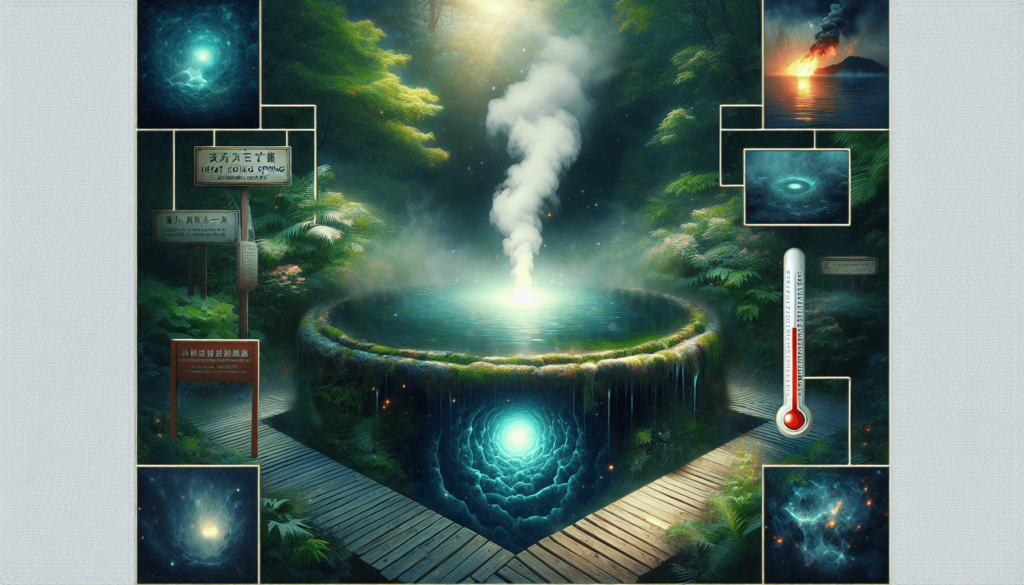
Human utilization of hot springs
Hot springs have been utilized by humans for centuries, serving as natural sources of relaxation, therapy, and even energy production. Their historical significance, therapeutic spa treatments, and potential for geothermal energy production have made hot springs valuable resources for human utilization.
Historical significance
Hot springs have played a significant role in human history, dating back to ancient civilizations. Many ancient cultures, such as the Romans and the Japanese, recognized the therapeutic properties of hot springs and created elaborate bathing rituals and spa traditions. These hot springs were regarded as sacred and provided not only physical rejuvenation but also spiritual and communal experiences.
Thermal spa treatments
The healing properties of hot springs have made them popular destinations for thermal spa treatments. The warm water, enriched with minerals and other beneficial components, has been used for various therapeutic purposes. Hydrotherapy, where water is used for treatment, has been a common practice in hot springs, helping to relieve muscle tension, improve blood circulation, and alleviate certain health conditions. Today, numerous spa resorts and wellness centers offer a wide range of hot spring-based treatments, including mineral baths, mud baths, and hydrotherapy massages.
Geothermal energy production
Hot springs are not only a source of relaxation and therapy but also a potential source of renewable energy. The geothermal heat captured from hot springs can be used to generate electricity or provide heating for residential and commercial buildings. Geothermal power plants harness the heat energy from hot springs by using it to boil water and produce steam, which drives turbines to produce electricity. This clean and sustainable form of energy production reduces dependence on fossil fuels and contributes to the global efforts of transitioning to renewable energy sources.
Environmental concerns
While hot springs offer various benefits and opportunities for human enjoyment, their utilization also raises environmental concerns. It is essential to understand and manage these concerns to ensure the long-term sustainability and preservation of hot spring ecosystems.
Impact on ecosystems
Hot springs create unique ecosystems that support a variety of plant and animal life. The warm water, combined with mineral-rich conditions, provides a habitat for specialized organisms that have adapted to these extreme environments. Human activities, such as the alteration of water flow or introduction of foreign substances, can disrupt these fragile ecosystems. It is crucial to minimize the impact of human utilization on the surrounding ecosystems and practice responsible stewardship to preserve the biodiversity of hot springs.
Sustainability measures
Sustainability measures play a crucial role in ensuring the long-term viability and preservation of hot springs. Conservation efforts can include implementing restrictions on water extraction, regulating visitor access to preserve delicate ecosystems, and managing waste disposal to prevent pollution. Additionally, environmental impact assessments and ongoing monitoring can help identify and address potential issues to maintain the ecological balance of hot spring environments.
Regulation and conservation
Authorities and organizations often implement regulations and conservation measures to protect hot springs. These may include zoning restrictions to limit development around hot spring areas, implementing wastewater treatment systems to prevent contamination, and establishing protected areas for the preservation of sensitive ecosystems. Educating visitors about responsible behavior and sustainable practices can also help minimize the impact of human activities on hot spring environments.
By implementing these measures and building awareness of the importance of conservation, hot springs can continue to be enjoyed by future generations while maintaining their natural beauty and ecological value.
In conclusion, hot springs are naturally hot geological features formed by geothermal or volcanic activity, or friction-generated heat. Their temperatures vary depending on factors such as the depth of the water source, the geological structure, and the rate of water circulation. Hot springs have been utilized by humans for centuries, offering relaxation, therapy, and potential energy resources. However, it is crucial to manage their environmental impact and preserve the delicate ecosystems surrounding hot springs. By practicing sustainable measures and conservation efforts, we can continue to enjoy the natural wonders of hot springs while protecting their beauty for future generations.
